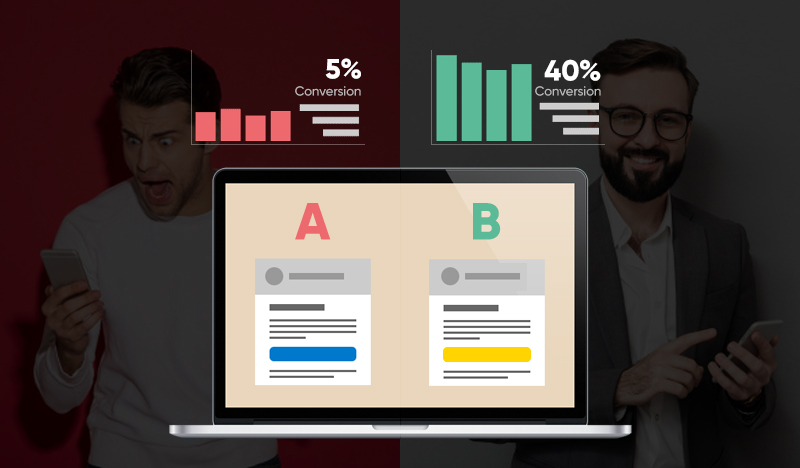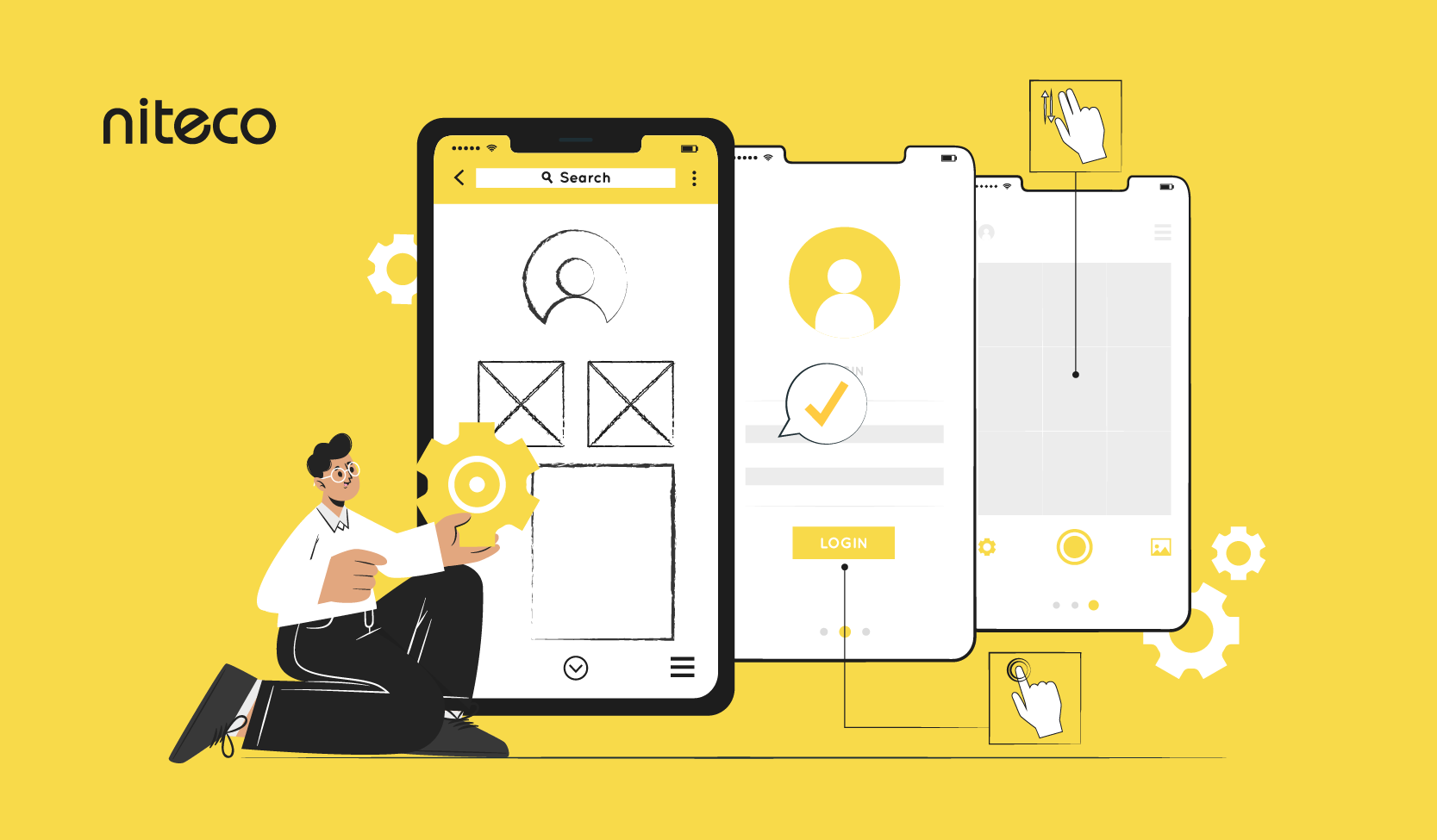In the fast-paced world we live in, providing a smooth user experience for your Commerce business is essential for increasing conversions and retaining customers. However, how can you be sure that your website's user experience meets expectations and that any UX improvements you make are actually improvements? The answer lies in usability testing.
This form of testing can determine whether users can effortlessly navigate through the right customer journey. As a part of user testing, its ultimate goal is to ensure that your website's features are accessible to every consumer and that the products your business offers align with their needs.
So, in this article, let’s delve deeper into what usability testing is, why it is important, and how you can enhance usability testing in your Commerce business.
Table of contents:
- What is usability testing?
- Why is usability testing important to an Commerce business?
- Where can you conduct usability testing on Commerce sites?
- Usability testing tips for an Commerce boost
- Conclusion
What is usability testing?
Basically, usability demonstrates how easily users can complete tasks on your website. And usability testing means running experiments to assess the user-friendliness and effectiveness of software (such as a website), encompassing its interface, navigation, and elements related to the user experience.
In other words, the aim of the test is typically to guarantee that users can easily locate what they seek and accomplish their objectives when they visit your website, all without facing any obstacles.
Misconceptions of usability testing
If you are preparing to conduct a usability test to give your website a jumpstart, make sure you don’t fall for any of these misconceptions.
Usability and user testing are the same?
They are 2 different tests. Website user testing is a vital step in preparing and launching a website. The aim is to evaluate the website's user-friendliness by observing and gathering feedback from individuals as they interact with the website in reality. Usability testing is one of the methods used for conducting user testing.
A/B testing is a method of running usability tests?
A/B testing should not be mistaken for a usability testing tool. A/B testing is a method for conducting experiments with various (usually two) versions of a page or a piece of content to determine the most effective one. In other words, A/B tests can assess alterations made based on information collected by user testing.
In the meantime, you can explore a comparison of A/B testing tools and discover how to optimize the value of your test results with Niteco.
Usability Testing and User Acceptance Testing can produce the same output?
You should expect distinct insights from these 2 kinds of tests. Usability testing explores user interactions and feedback, while user acceptance testing (UAT) focuses on software functionality. In other words, while UAT gives more technical results, usability testing provides user-centric insights.
Why is usability testing important to an Commerce business?
Usability testing is considered a crucial step in gauging customer satisfaction. On a larger scale, it can affect the overall performance of your business. Let's examine the 6 key benefits of usability testing in Commerce.
1. Increasing conversions
Usability testing plays a substantial role in shaping the conversion rates of Commerce businesses. It provides valuable insights for streamlining processes and preventing cart abandonment. In essence, businesses can enhance user engagement, boost revenue, and foster customer retention by offering clear visual cues that make finding desired items effortless.
Any organization can significantly increase both online and offline profits through enhancements in website usability. Just look at the successful Conversion Rate Optimization (CRO) case study of Electrolux that drove 25% increase in “Add to cart” actions and more.
Knowing how to calculate your website’s conversion rate ensures you can track the impact of usability improvements on conversions.
2. Improving user experience
Conducting usability tests can yield clear-cut insights into enhancing the user experience. In a world where every second counts, users crave straightforward digital experiences and instant satisfaction. It's been proven that after encountering a poor user experience, 88% of users are unlikely to return. To prevent this, implementing usability testing ensures that your website's navigation, buttons, and calls to action (CTAs) are clear and user-friendly.
3. Improving brand perception and credibility
As UXcam gathered, while 91% of users that are unsatisfied with a business will just leave with no complaints, another study suggested that 13% of customers intend to share their negative experiences with 15 or more people.
Bad news travels fast, so make sure to prevent such lasting damage to your business reputation. Usability testing can pinpoint issues that your users might encounter and assist you in developing timely solutions to ensure a smoother user experience.
4. Informing data-driven decision-making
Usability testing offers another advantage to Commerce businesses by bolstering the data-driven decision-making process. Collecting feedback on how users perceive and think about a particular feature can yield valuable insights for ongoing enhancements and well-informed marketing strategies.
5. Reducing browsing time
It was reported by Unbounce that approximately 70% of consumers agree that the browsing speed of a webpage affects their inclination to make a purchase. Therefore, consider running usability tests if you want to shorten your website’s loading time since it can direct you to the root cause. It can guide you to broken links, improperly loading images, and forms that fail to submit due to missing required information.
Fast loading speed is just one of many conversion gates for a conversion-focused Commerce landing page. Bookmark these Commerce best practices to gain impressive results for the whole business now!
6. Enhancing SEO
Another benefit of usability testing is to provide insights into SEO-related issues that need improvement, making your website more SEO-friendly. Ultimately, this can help you align with Core Web Vitals metrics, such as page loading speed, interactivity, and visual stability, which contribute to higher Google search rankings and a more positive user experience.
If you want to assess your site's performance and gain valuable insights, use our free audit tool.
Where can you conduct usability testing on Commerce sites?
The initial step to taking your business to the next level is optimizing your Commerce website. And conducting usability testing on these 6 website features can have a significant impact on the optimization process.
1. Payments
The checkout process is the deciding factor in determining whether all your efforts pay off. It has been shown that 87% of online shoppers will abandon their shopping carts if the checkout process is complicated, and 55% will completely abandon the retailer.
Conducting usability tests on elements of the checkout page can help you reduce cart abandonment rates and increase future purchases. You would not want to invest so many resources in satisfying your customers, only to have them abandon their carts in the blink of an eye during the payment stage.
2. Navigation and user interface
Website navigation is the gateway to a world of satisfied users. This is where usability testing comes in handy. By collecting insights and data from the test, you can identify issues like broken links or malfunctioning buttons and then take necessary actions for a smoother navigation.
Furthermore, usability testing can provide user-centered insights regarding how the user interface should appear, even when there are assumptions previously made by developers and designers. Users may have different preferences and expectations than you do. So, using usability testing to get to know those preferences and see how actual new users want to use your site is key to your success.
3. Content, images, and videos
Usability testing can be extremely useful when you’re trying to evaluate all sorts of content, including visual content. Conducting usability tests can provide you with insights you can then use to write copy, design graphics and place visuals where it makes the most sense.
4. Loading speed
As previously mentioned, the slower your website loads, the higher the likelihood of a reduced conversion rate. Therefore, conducting usability testing is crucial to prevent slow-loading pages. This test can identify which elements are causing speed-related issues and where you can optimize for faster loading speeds, etc.
5. Calls-to-Action (CTA)
Optimizing CTA buttons to increase the likelihood of purchases is another area where usability testing can be extremely useful. The test can reveal which buttons are effective, where they should be positioned, what color scheme works best, and more. This lets you ensure that your CTAs have the power to encourage your customers to take the actions you want them to take.
6. Product information
Remember that users come to your Commerce site to buy something, so pay extra close attention to straightforward product details. Test if your product descriptions provide what consumers need and want to know and remove any unnecessary information that might distract them from making the purchase.
These 6 seven elements are only a small selection. There are more parts of your website that can be optimized by usability testing - headings, forms, and many more. If you want to run usability testing for your own business, don’t hesitate to leave us a message.
Usability testing tips for an Commerce boost
As should now be clear, usability testing can be incredibly beneficial to your Commerce business. And to maximize the benefits you get from your testing; you should always keep these 3 best practices in mind:
Go through iterations to fix all usability issues.
Usability tests may unveil a large number of issues at once, and attempting to address all problems simultaneously can be exceedingly challenging. Instead, focus on resolving one issue at a time, prioritizing the most critical ones.
This is an ongoing learning journey, so tackle problems to the best of your capability, release the product, gain insights from feedback, and make necessary refinements through iterations.
Set clear goals and stick to them.
New problems often arise as you delve deeper and deeper into an issue, but it’s a good idea to stay persistent while you’re conducting usability testing. Don’t be too ambitious trying to fix every new issue at once, as constantly changing objectives can make your testing campaign less effective.
Test again to make sure the changes have been effective.
Remember to run the same test again once the updated version of your website is available. This can help determine if your adjustments worked and if the previous test was run correctly. This practice should be applied not only to usability testing but also to other types of tests.
Check out our additional materials to get the most out of all types of testing and experimentation.
Conclusion
In conclusion, Commerce usability testing is an indispensable tool for creating and sustaining a successful Commerce site. It lets you assess user experiences, pinpoint areas of concern, and make the best adjustments. And if done right, it allows businesses to elevate customer satisfaction, foster trust, boost revenue, and maintain a competitive edge in the industry.
If you’re looking for solutions to improve your site’s user experience or benefit from the latest advances in experience-driven Commerce, don’t hesitate to reach out. Contact us now!
to transform your business and drive results?



